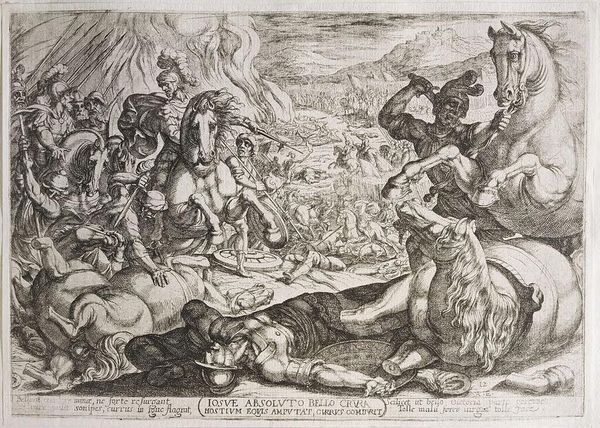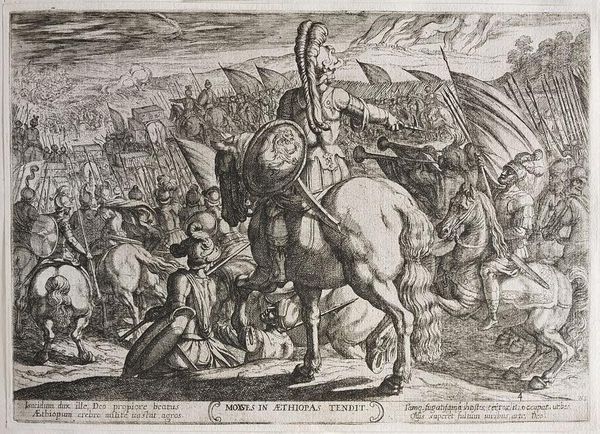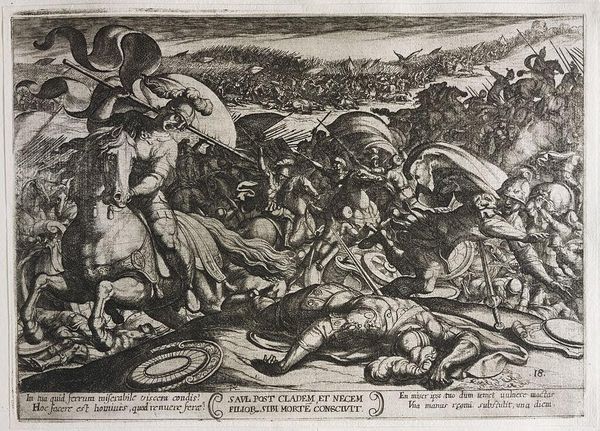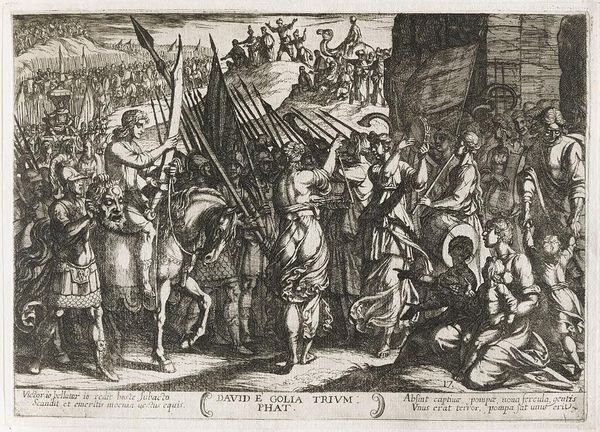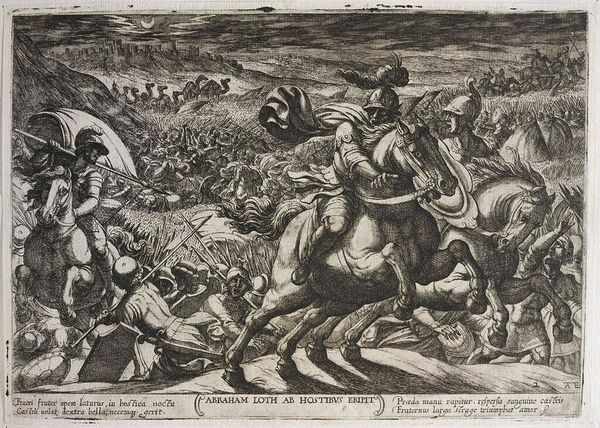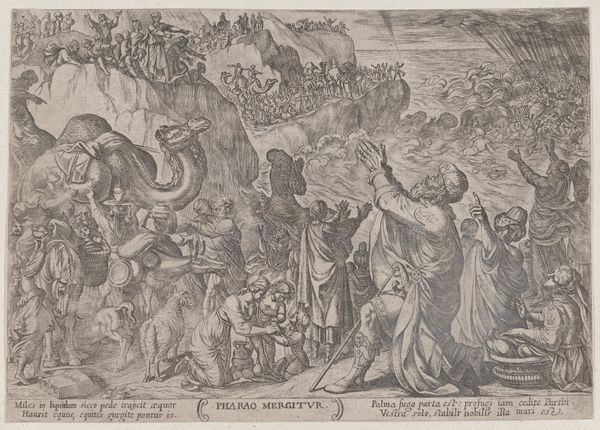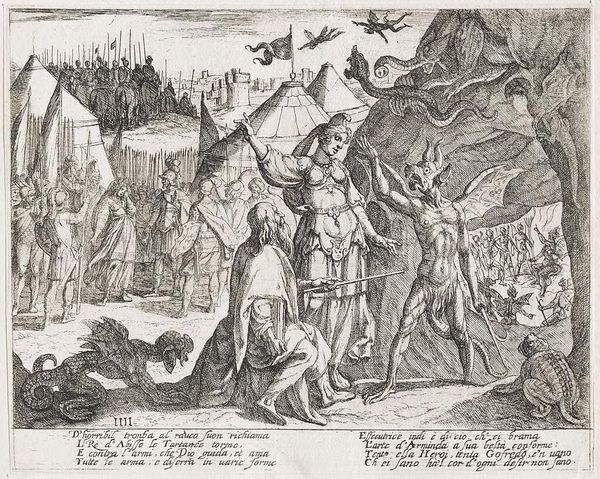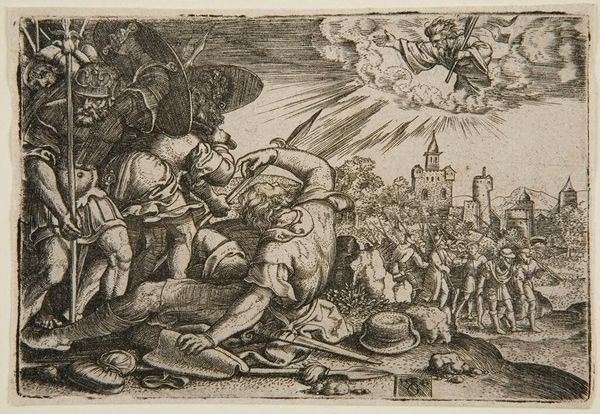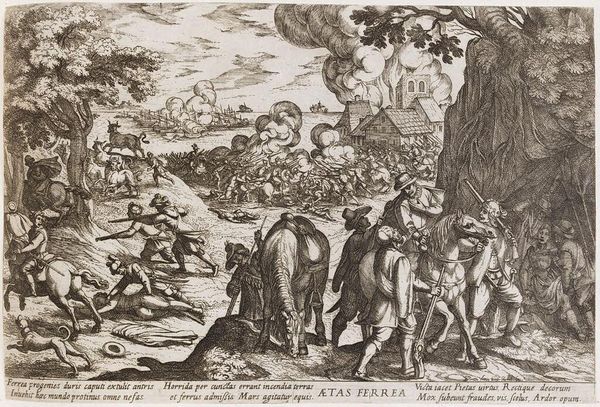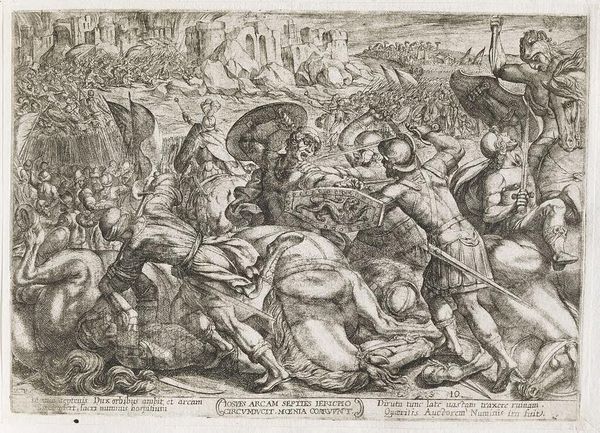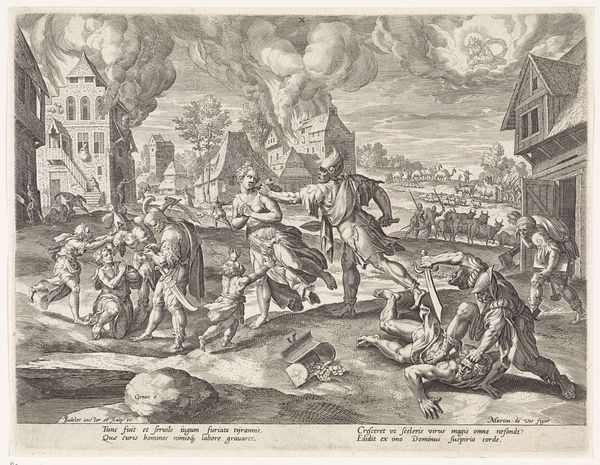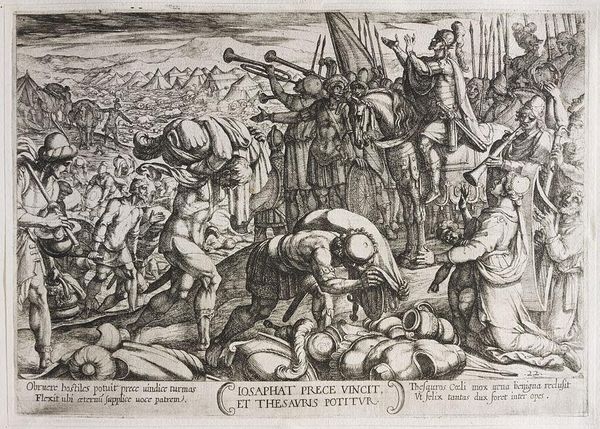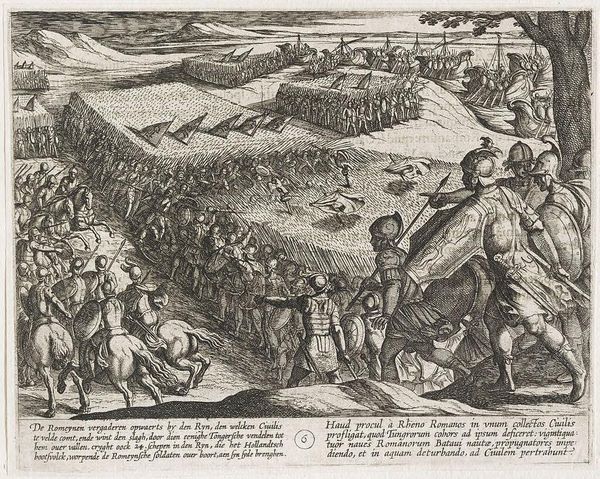
Copyright: CC0 1.0
Curator: This is Antonio Tempesta's "The Egyptians Drowning in the Red Sea." Tempesta was working in the late 16th and early 17th centuries. Look closely at the density of figures and the dramatic action. Editor: It feels like a chaotic explosion rendered in miniature. The sheer volume of people and animals crammed into the scene creates a sense of overwhelming panic. I can almost hear the screams. Curator: The Red Sea has potent symbolic weight. As a moment of divine intervention and liberation for the Israelites, but also of annihilation for the Egyptians. The image becomes a symbol of triumph over oppression, of God's power to alter natural laws. Editor: The etching technique emphasizes this feeling. The sharp lines lend a sense of urgency and finality to the drowning Egyptians, who are depicted quite graphically, wouldn't you say? Curator: Absolutely. And remember, this isn't just a historical depiction; it’s a theological statement about justice and divine authority, mirroring the visual tropes of the era. Editor: Considering the historical context shifts my understanding. I see it less as pure chaos now and more as a deliberate staging of power dynamics. Curator: Precisely. It’s fascinating how an image can serve as both a historical record and a reflection of its cultural moment.
Comments
No comments
Be the first to comment and join the conversation on the ultimate creative platform.
